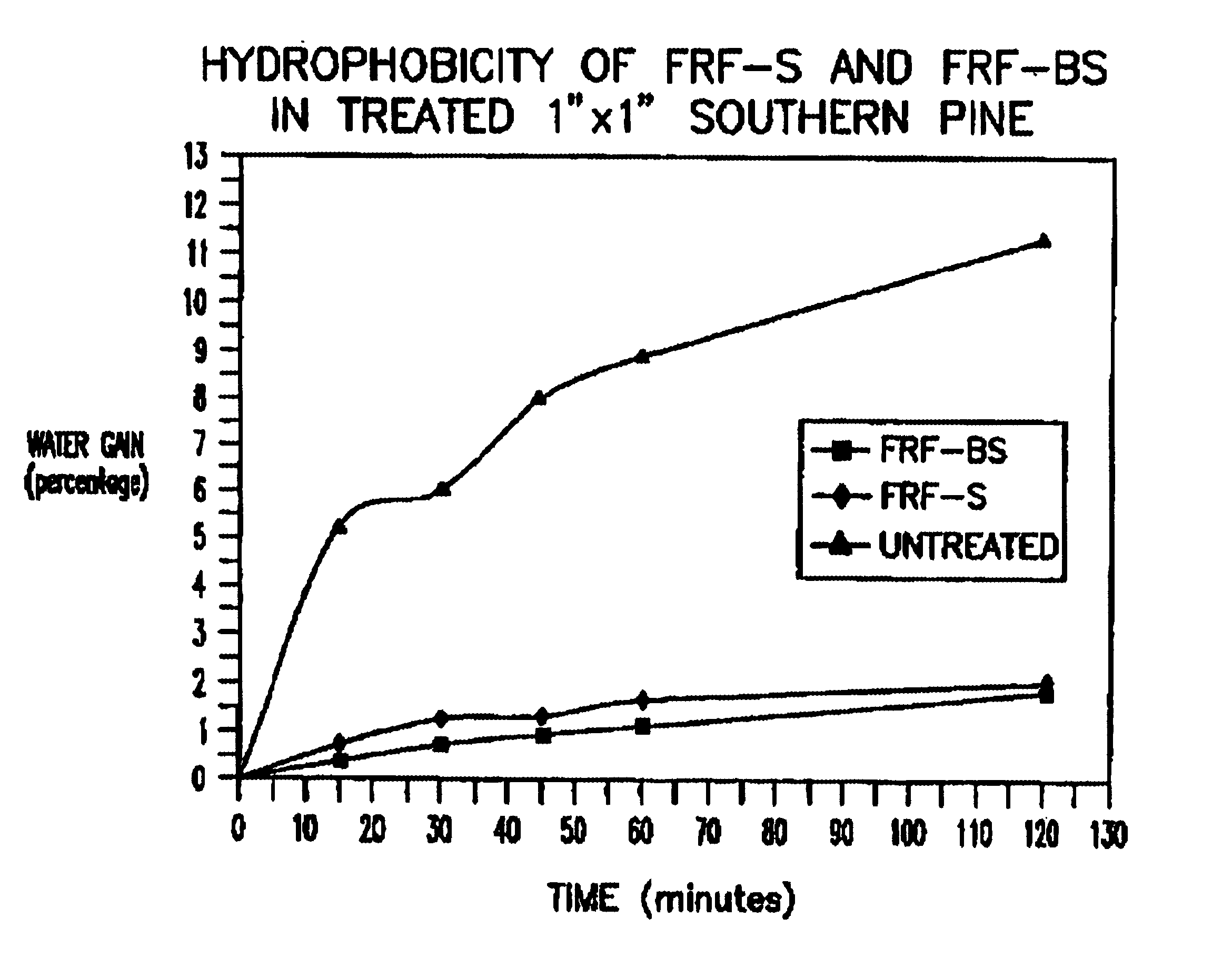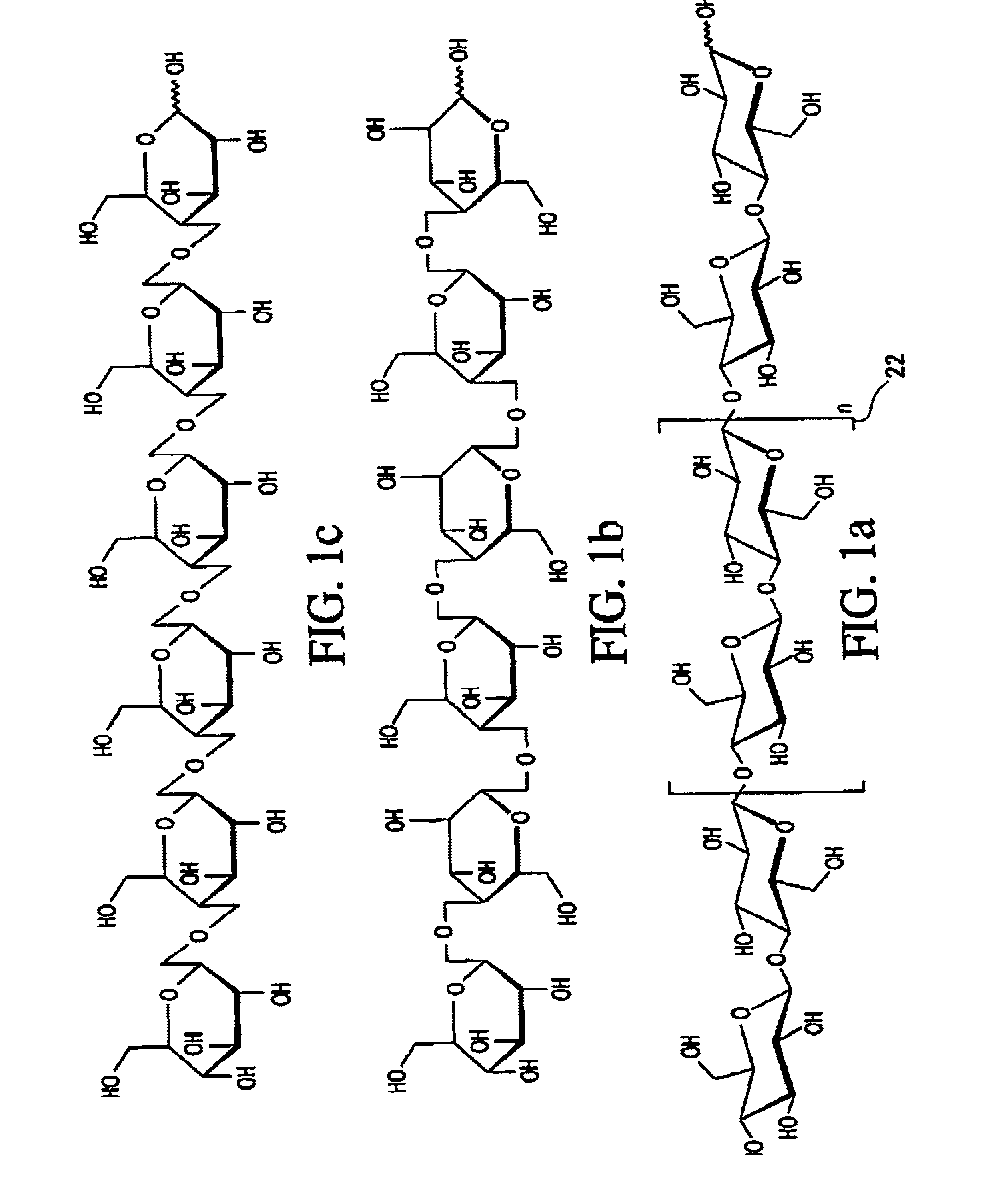Process for treating wood and products from treated wood
a technology for treating wood and products, applied in the field of wood treatment, can solve the problems of difficulty in ensuring the stability of wood, unable to effectively transport silicon into the wood and keep, and unable to achieve the effect of effectively transferring silicon into the wood, etc., and achieve the effect of improving the strength and durability of wood
- Summary
- Abstract
- Description
- Claims
- Application Information
AI Technical Summary
Benefits of technology
Problems solved by technology
Method used
Image
Examples
example-1
Preparation of Reagents for Wood Treatments
Basic Silicon Formula (FRF-S): [Silicon]
[0310]In a 250 mL reagent bottle was added 137 mL of reagent alcohol was added followed by 60 mL of methyltrimethoxysilane (MTMS). After mixing the two agents by shaking; 3.0 mL of methyltrichlorosilane (MTS) was added from a pipette to this solution and kept ready for treatment. This clear colorless formula was found to be stable for the next several months with no appearance of any residue or cloudiness.
[0311]The drying agent is denatured alcohol available as a gasoline additive. This could be substituted with wood alcohol which is commercially available as an industrial solvent. The formula is made of 30% methyltrimethoxysilane (MTMS) and 1.5% methyltrichlorosilane (MTS).
Basic Boron-Silicon Formula (FRF-BS): [Boron, Silicon]
[0312]This formula is made of 30% methyltrimethoxysilane; 3% trimethyborate and 1.5% methyltrichlorosilane (MTS) in denatured alcohol. This boron and silicon containing treatmen...
example-2
Treatment of Wood:
[0314]In a closed bell jar 200 mL of the appropriate reagents, (FRF-S; FRF-BS and FRF-MBS formula prepared as specified above) were poured and three wood pieces were placed inside such that about three fourth portions of the wood blocks were immersed in the reagents. 1×1″ blocks of red oak and yellow pine as supplied (raw wood) were used for this study. The wood pieces were allowed to remain in this jar overnight during which time the reagents were drawn inside the wood. The temperature of the reagent solution increased by about 5 degree Centigrade during the initial exposure time of about 20 minutes by which time the penetration of the formula to the top surface of the wood was complete.
[0315]The wood pieces were allowed to air dry and periodically they were weighed to constant weight gain (about 48 hours). From this the incorporation of reagents to wood was calculated on a weight basis. The results are tabulated in the following table.
[0316]
Wood SampleWood Dimens...
example-3
Hydrophobicity:
[0319]Pieces of red oak and yellow pine treated as above in example-2 and untreated wood (red oak and yellow pine) blocks were selected at random and they were completely immersed in water (distilled water, immersions accomplished by placing a glass stopper over the wood piece such that the entire wood is completely immersed in water) for varying periods of time, and the weight of water absorbed as a function of time was determined for each treatment. These comparative results obtained under identical conditions are summarized in the accompanying graphs: [for red oak and yellow pine]. The results clearly illustrates that there are striking differences in the water absorption of treated wood with the untreated control. FIGS. 18A &18B?
[0320]The results show that the apparent water absorption for red oak and yellow pine are similar although their silicon and boron contents differ significantly. Similarly FRF-S treated wood samples and FRF-BS treated wood samples exhibit ...
PUM
| Property | Measurement | Unit |
|---|---|---|
| pKa | aaaaa | aaaaa |
| pKa | aaaaa | aaaaa |
| pKa | aaaaa | aaaaa |
Abstract
Description
Claims
Application Information
 Login to View More
Login to View More - R&D
- Intellectual Property
- Life Sciences
- Materials
- Tech Scout
- Unparalleled Data Quality
- Higher Quality Content
- 60% Fewer Hallucinations
Browse by: Latest US Patents, China's latest patents, Technical Efficacy Thesaurus, Application Domain, Technology Topic, Popular Technical Reports.
© 2025 PatSnap. All rights reserved.Legal|Privacy policy|Modern Slavery Act Transparency Statement|Sitemap|About US| Contact US: help@patsnap.com



